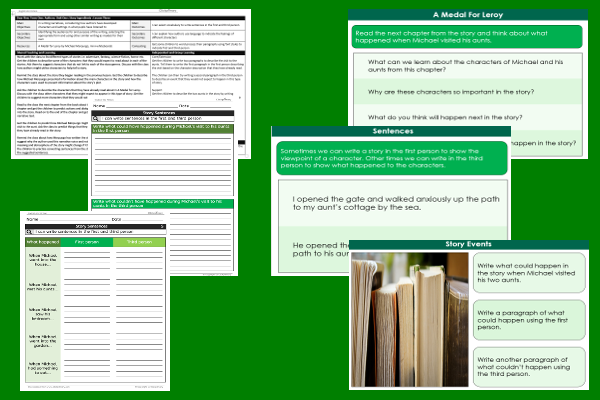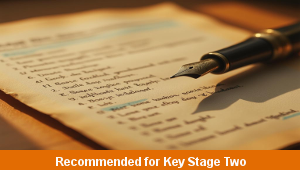Lesson Three – Story Events

This English teaching pack for Key Stage Two gets the children to compose a selection of paragraphs using the first and third person describing a range of events that might feature in a narrative story about an adventure.
The class can suggest and write different sentences to suggest what could and couldn’t happen to characters to match each of the selected story events.
Download this teaching pack including a lesson plan, classroom activities and an interactive presentation to compose a selection of paragraphs using the first and third person describing a range of events that might feature in a narrative story about an adventure
Activities in this teaching pack include a set of differentiated worksheets to compose a selection of different paragraphs using the first and third person describing a range of events that might feature in narrative story from a specific type of genre.
The interactive presentation gets the children to explore how to compose paragraphs using the first and third person describing a range of events that might feature in narrative story.
This lesson is part of an English scheme of work to get the children to explore narrative structures and use of vocabulary by an established children’s writer, identify and spell words with silent letters and convert sentences between the third and first person. There are teaching activities for shared learning, differentiated worksheets to support independent learning and interactive presentations to introduce concepts and key skills.
-

Length Calculations
Practise using number calculations skills for addition, subtraction, division and multiplication when solving problems related to length measurements
-

Maths Calculations Assessment
Assess abilities in solving a range of different number problems for addition and subtraction when working with informal and formal written calculations
-

Determinant Lists
Explain and model how to make lists of objects used and found in different locations to match the correct determinants of a and an
-

English SPAG Assessment
Assess abilities in composing sentences for fiction and non-fiction using the correct spellings, punctuation marks and grammar vocabulary phrases
